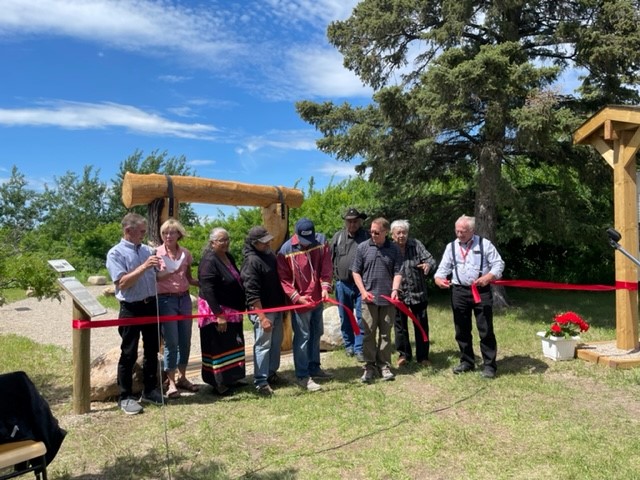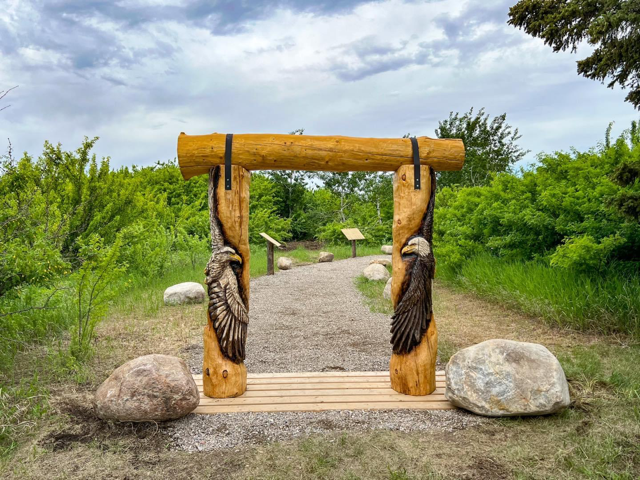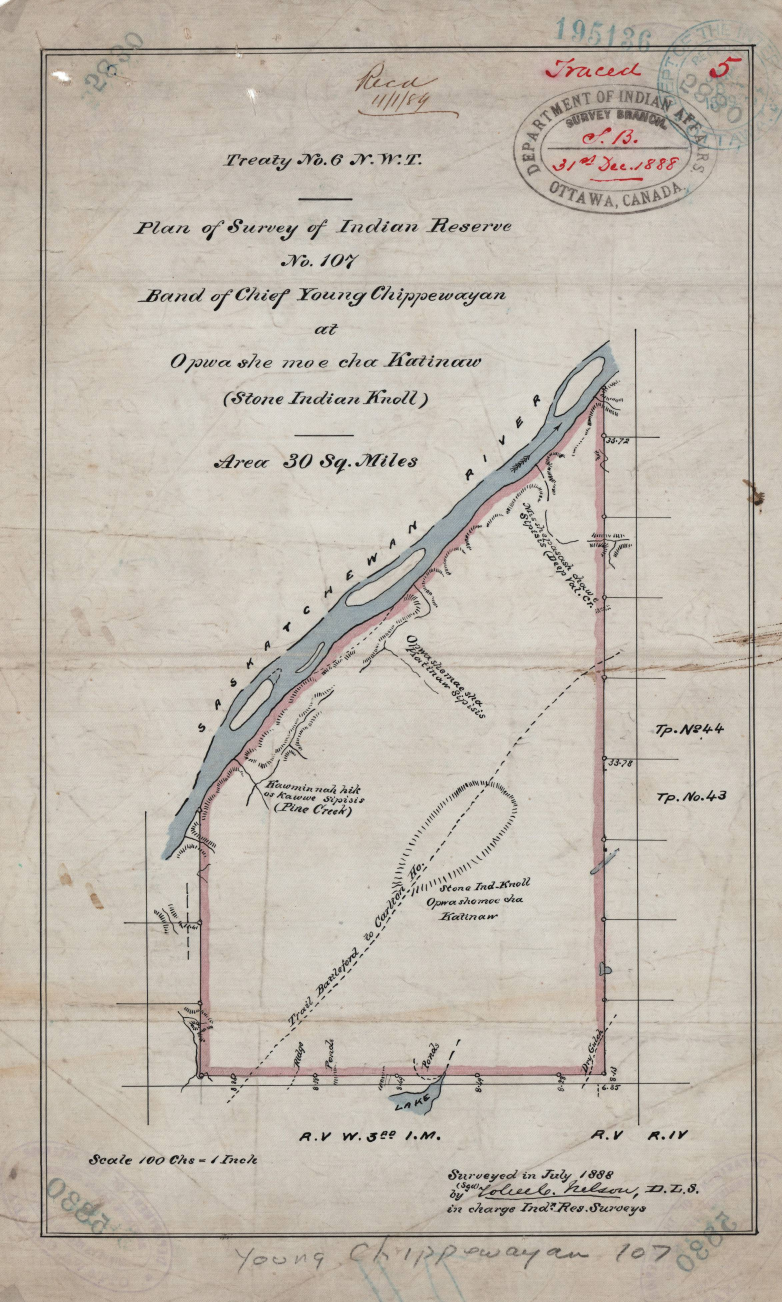The Stoney Knoll Interpretive Site has been launched with a ribbon cutting ceremony. Kids from different surrounding schools along with many leaders took part in the historical event.

“It was all about friendship and understanding and getting to know how to live together peacefully,” said Wilmer Froese. (The event) was done very well and very peaceful.”
Descendants of the Stoney Knoll band were in attendance including the late Chief Weenie’s wife, Sylvia. There is currently a land claim that is in process, according to Office of the Treaty Commissioner (OTC) Mary Cutherberson.
“Stoney Knoll still does not have that recognition by the Crown that their land was unlawfully surrendered,” said Culbertson. “Hopefully within the next five years that won’t be the case anymore and they’ll have that full recognition again … they don’t specifically want to displace the people who are there now … Sylvia said ‘you’ve taken care of the land, you’ve taken care of our land, and you love the land as much as we do.’ That was one of their acts of reconciliation together.”
Band members are hoping to receive recognition by the Government of Canada to confirm that an unlawful surrender occurred. What the future holds for the Stoney Knoll nation awaits as the land claim is currently in process.
Historically, the Stoney Knoll band, was referred to as the Young Chippewan band and was once located in the area where the town of Laird now sits.
In July 1888, the Stoney Knoll band land was surveyed as approximately 30 square miles along the north Saskatchewan river. The Stoney Knoll band members left for a brief period of time to search for food as the buffalo population decreased in numbers.
Meanwhile, Mennonite and Lutheran settlers were arriving in Saskatchewan. The Canadian government searched for lands to sell to the newcomers. It was assumed there were no more Stoney Knoll band members.
“The (Canadian) government at the time, had taken that land and said it was surrendered,” said Culbertson. “The (government) said that the Young Chippewan people had all died (and) there was none of them left.”

Get daily National news
Having their land sold to the Mennonite and Lutheran settlers, the Stoney Knoll band members split and settled in the neighbouring First Nation communities of North Battleford.
“Only in the 1970s did this come to the surface when some of the Stoney Knoll Nation people came in and told the farmers that this was actually their land,” “It could have been very confrontational and was kind of an intense period for a while because no one really knew how to how we would solve this problem.”
Fast forward to 2006, a Memorandum of Understanding (MOU) was signed between the members and descendants of the Stoney Knoll nation and the settlers who reside on the land aimed at working together on a peaceful resolution to ease tensions that arose.
Culbertson said the late Chief Ben Weenie at the time and the hereditary Chief George Kingfisher worked together with the Mennonite Central Committee and the Lutherans of the area to try to reconcile.

With ongoing efforts to achieve reconciliation, members of the Mennonite community who reside in Laird have been working with the Indigenous community to bridge the gaps that were formed between the two.
Froese and his wife Barb took it upon themselves to create an interpretive site for visitors to understand the story the original land owners were the Stoney Knoll people.










Comments